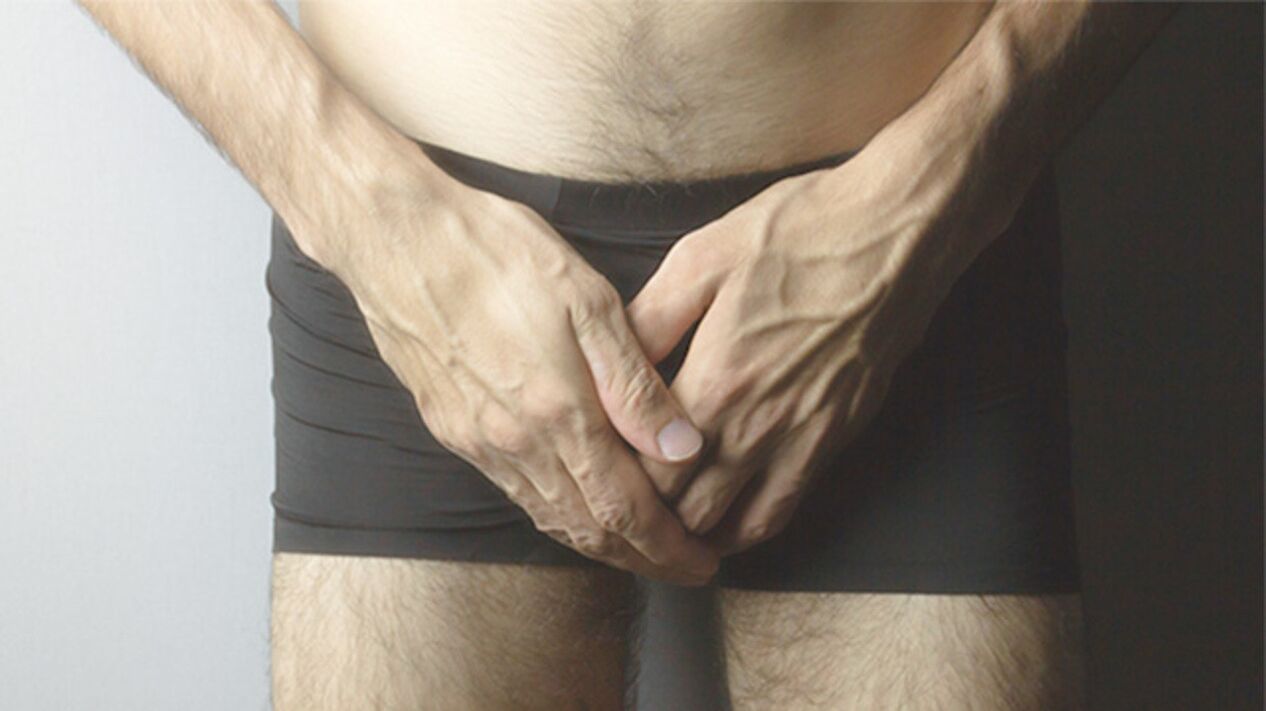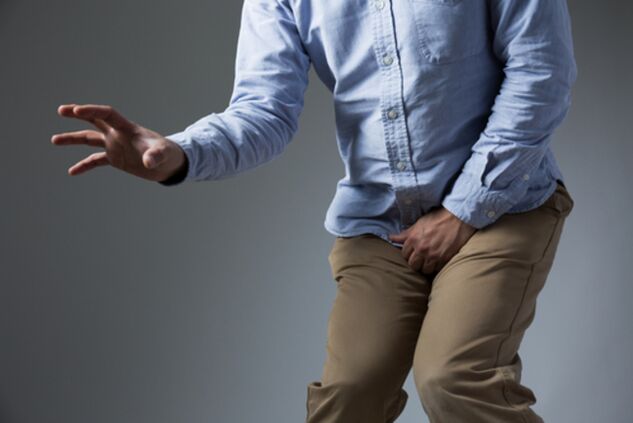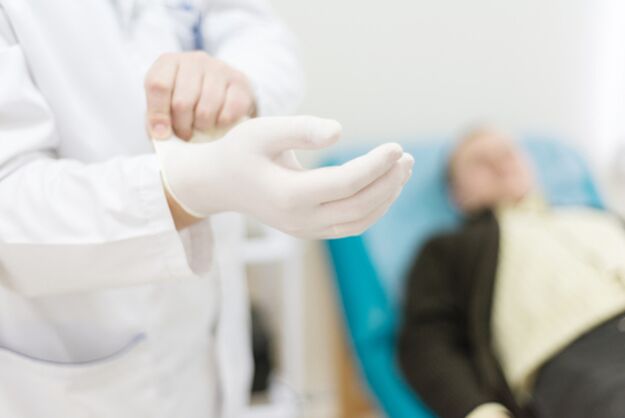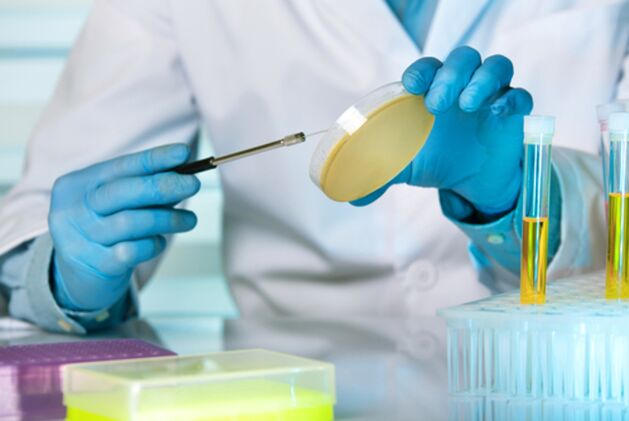
According to statistics, about 40% of men with symptoms of prostatitis do not see a doctor. At the same time, the consequences of the disease, including the risk of male infertility, are very serious. Learn what symptoms to see a doctor and what to do to avoid getting sick.
What is prostatitis
Prostatitis is an inflammation of the prostate gland or prostate, one of the most common "male" diseases. Prostatitis is very different, with and without infection, with insufficient sexual activity and excess, and so on. This article will help you understand the main nuances of the disease.
Approximately 10% of men experience symptoms of chronic prostatitis, but only 60% of them see a doctor (Nickel JC et al. , 2001).
Prostatitis affects men of all ages and continues to increase in prevalence. Men under the age of 50 account for 65. 2% of patients, and according to various sources, the overall prevalence of the disease among men is 13. 235% (Lummus W. F. , 2001; Meares E. M. , 1990). According to other data, 8-35% of men between the ages of 20 and 40 suffer from prostatitis. In older men, the true picture is "masked" by prostate hyperplasia (prostate adenoma) because the symptoms are basically the same. Up to 65% of patients with adenomas undergo surgery for unrecognized prostatitis. (Nickel JC et al. , 2007). Given that inflammatory diseases of the genitals are a common cause of male infertility, scientists speak of a threat to the reproductive health of the nation.
What is prostatitis
A simple division into acute and chronic is not enough to characterize prostatitis, the disease involves several syndromes with different clinical course. Consider which forms of the disease are isolated according to the modern classification (Krieger JN et al. , 1999).
Category I: Acute bacterial prostatitis. . . A relatively rare species that accounts for only 5% of cases. It is a result of urinary tract infection, develops against the background of predisposing factors (impaired urinary flow, immunity). In 5% of cases it turns into chronic bacterial prostatitis.
Category II: Chronic bacterial prostatitis. . . It is a rare disease that is considered to be a recurrent urinary tract infection with a primary focus on the prostate.
Category III: Chronic prostatitis / chronic pelvic pain syndrome. . . Previously, the disease was called chronic abacterial prostatitis, which accounts for 95% of all diagnosed prostatitis (Habermacher GM, 2006). Chronic pain syndrome combines pathologies characterized by urological pain in the absence of urinary tract infection. This does not include urethritis, cancer, narrowing of the urethra, neurological damage to the bladder. It is divided into categories IIIa and IIIb: with signs of inflammation and without signs of inflammation. These symptoms are determined in the laboratory, mainly by the presence of leukocytes in the urine or prostate secretion.
Category IV: Asymptomatic inflammatory prostatitis. . . It is an accidental finding when examining a patient. Most men are diagnosed with infertility or an increase in the level of the PSA marker in the blood. We do not consider this type of disease in detail, because scientists have not yet developed a uniform view of this form (Nickel JC, 2011).
Symptoms of prostatitis
Symptoms of acute prostatitis
The disease begins abruptly, there is pain in the perineum, body temperature rises. The urge to urinate is frequent (at least 5-7 per night), urination is painful and difficult. Urine is excreted in intermediate parts, there is no satisfaction with urine. There may be blood in the last parts of the urine. The pain is exacerbated by bowel movements. This is a serious disease that requires emergency care.
Complications of acute prostatitis include:
- acute urinary retention;
- prostate abscess (formation of a purulent focus);
- paraprostatitis (inflammation of the tissue around the gland, which can lead to a progressive abscess);
- phlebitis of the paraprostatic venous plexus (inflammation of the surrounding vessels).

Symptoms of chronic prostatitis
All types of chronic prostatitis (both bacterial and chronic pelvic pain syndrome) are similar. The picture of the disease is very variable, below is a list of symptoms that can appear in different severity.
- Pain:
- pain or discomfort in one of the characteristic areas (groin, supra-groin, testicles, penis, back, abdomen, rectum);
- pain when urinating or increased pain when urinating;
- pain during or after ejaculation;
- increased sensitivity of the muscles in the perineum;
- neuropathic pain;
- pain due to intestinal irritation.
- Urinary symptoms:
- lower urinary tract symptoms (LUTS) associated with ejaculation (urge to empty the bladder, urinary incontinence, urination, night urination, pain during urination);
- LUTS associated with obstruction (poor urinary pressure, interstitial flow, need to push);
- burning sensation in the urethra;
- recurrent urinary tract infections.
- Sexual disorders:
- erectile dysfunction;
- ejaculatory disorders (early or late ejaculation, blood in sperm);
- decreased libido.
- Psychosocial symptoms:
- anxiety;
- depression;
- cognitive and behavioral disorders;
- decline in quality of life.
Psychological stress and sexual dysfunction are more common in men with chronic pelvic pain syndrome (A. Mehik, 2001).

If you have symptoms of prostatitis and chronic pelvic pain syndrome, you should consult a urologist or andrologist. In case of acute symptoms of acute prostatitis, you should seek emergency care to prevent urinary retention and other complications.
Causes of prostatitis
Inflammation of the prostate develops under the influence of many factors. In the absence of predisposing factors, a healthy gland has the potential to fight infection and inflammation. The onset of the disease is facilitated by a decrease in immunity, impaired flow of prostate secretions, inadequate sexual regime, impaired urine flow and deterioration of blood circulation in the pelvic organs. Other risk factors include cold climates, alcohol abuse, and sedentary lifestyles.
Acute prostatitis is a bacterial inflammation, the most common pathogens of which are Escherichia coli, Proteus, Pseudomonas aeruginosa, Enterobacter and others. The disease develops when the infection is excreted in the urine, through an ascending infection, through the lymph in the rectum, or through the bloodstream from other sources of infection. Sexual transmission of pathogens plays an important role.
Risk factors for acute bacterial prostatitis:
- phimosis;
- urinary tract infections;
- acute epididymitis (inflammation of the epididymis);
- unprotected anal sex;
- bladder catheterization;
- urinary tract operations;
- prostate biopsy;
- secretion and secretion of prostate fluid.
The risk factors and causative agents of chronic bacterial prostatitis are similar to those of acute ones. Of particular importance are the causative agents of sexually transmitted infections: Trichomonas, chlamydia, ureaplasma, mycoplasma.
Chronic pelvic pain syndrome is not currently considered a homogeneous disease; doctors have difficulty explaining the root cause. In only one-third of these patients, a biopsy revealed inflammatory changes in the prostate gland. Immune, neurological and endocrine diseases are believed to play a leading role in its development.
Among the causes of the syndrome considered by scientists:
- infections
- autoimmune diseases;
- chemical inflammation due to urinary incontinence;
- disorders of the immune system;
- urination into the prostate ducts;
- pain in the muscles of the pelvic floor due to pathological tension;
- nerve entrapment;
- psychological stress.
Diagnosis of prostatitis
Diagnosisacute prostatitisis based on:
- complaints;
- medical examination;
- urine tests involving bacteriological culture to identify the pathogen.
In uncomplicated cases, prostate imaging is generally not needed. Transrectal ultrasound (ultrasound) or computed tomography (CT) of the pelvis is performed if the urinary retention rate is acute and a prostate abscess is suspected. The PSA test is also not recommended, as its level will increase in any case in an acute illness. Prostate biopsy is contraindicated due to the risk of pain and complications.
To facilitate diagnosischronic prostatitisDoctors use several special questionnaires to describe the history of the disease, changes in quality of life and symptoms. During the examination, the doctor palpates the abdomen, conducts a digital examination of the prostate gland (rectum), assesses the condition of the pelvic muscles. In most cases, the diagnosis is made on the basis of a medical examination and bacteriological and clinical examination of urine or semen. Criteria for the diagnosis of chronic bacterial prostatitis are recurrent urinary tract infections and a tenfold increase in bacterial levels in prostate secretions, sperm culture, or urine analysis after prostate massage (Budía A; 2006).
If the analysis of prostate and urinary excretion does not provide sufficient information in the presence of symptoms of chronic prostatitis, the following additional studies are performed:
- 2 glass samples (urine analysis to determine the location of infection);
- 4 bottle samples;
- urine flow rate;
- determination of residual urine;
- cytological analysis of urine.

The following tests are also used in the differential diagnosis (to exclude prostate stones, abscesses, cancer):
- implantation of a stain from the urethra;
- examination of sexually transmitted diseases;
- Analysis for PSA;
- uroflowmetry;
- cystoscopy;
- prostate biopsy;
- retrograde urethrography;
- Ultrasound examination of the kidneys;
- magnetic resonance imaging, computed tomography.
Treatment of prostatitis
Treatment of bacterial prostatitis
Ideally, antibiotic treatment should be based on bacteriological data. But in general, it starts without getting results, thinking that the most common pathogens are intestinal bacteria. According to the European guidelines for the treatment of urological infections, the drugs of choice for the treatment of acute and chronic bacterial prostatitis are fluoroquinolones, macrolides, antibiotics of the tetracycline group. Once the pathogen is identified, the antibiotic can be replaced.
Complex acute bacterial prostatitis sometimes requires surgical treatment. In the case of an abscess, the operation passes through the rectum or urethra. In case of acute urinary retention, if it is not possible for the catheter to pass through the urethra, a cystostomy is performed, and the catheter is placed through the abdominal wall above the pubis.
Additional treatments for acute prostatitis include painkillers, fever, fluids, and stool softeners. Alpha blockers are also used to improve urine flow. After treatment for acute prostatitis, patients should abstain from sexual intercourse for a week.
Treatment of chronic prostatitis / chronic pelvic pain syndrome
As we have noted, it is very difficult to determine the cause of this syndrome. Difficulties with the choice of therapy. Generally, the doctor begins treatment by prescribing 1-2 drugs, which can be changed if the effectiveness is not enough. The European Guidelines for the Management of Chronic Pelvic Pain offer the following medications and treatments:
- Alpha blockers significantly relieve symptoms by relaxing the bladder and prostate.
- Antibiotics can also be prescribed because empirical experience has shown that they can be effective.
- Anti-inflammatory drugs improve quality of life and reduce pain.
- 5-alpha reductase inhibitors relieve the symptoms of prostatitis.
- Muscle relaxants have a similar effect to alpha blockers.
- Phytotherapy. The bioflavonoid quercetin and several other drugs relieve pain due to their anti-inflammatory and antioxidant properties.
Helps reduce placebo symptoms by 30% in chronic pelvic pain syndrome (D. A. Shoskes, 1999)
Drug-free treatment:
- Prostate massage. It is performed with a finger from the rectum, courses are recommended 1-3 times a week for 3-4 weeks.
- Physical methods:
- electromagnetic therapy;
- microwave thermotherapy;
- extracorporeal shock wave therapy.
- Surgical treatment includes endoscopic incision of the bladder neck, transurethral resection of the prostate gland, and even removal if other methods fail. This method of treatment is rarely used.
- Psychological treatment. Deterioration of quality of life and difficult attitude of patients to the situation require the intervention of a psychologist.
Prevention
For warningacute prostatitistimely treatment of any urological diseases, remember a safe sex life and not infect the genitals. Partial prophylaxis should be performed by physicians without prescribing unnecessary invasive procedures (biopsy, cystoscopy) and without radical treatment of urinary tract infections.

The main points of prevention of chronic prostatitis:
- Personal hygiene. Nearby areas should be kept clean to prevent infections.
- Physical activity. When sitting for a long time, the blood in the pelvic region stagnates, which can contribute to inflammation of the prostate gland. You have to get up and move at every opportunity. Traction, aerobic exercise have a good effect. Among other things, physical activity reduces the anxiety associated with prostatitis.
- Age-appropriate normal sexual activity.
- Liquid. You should drink enough to help remove bacteria from the urinary tract.
- Diet. It is recommended to limit the consumption of foods that irritate the prostate gland: coffee, tea, carbonated beverages, spices, pickles, canned foods, fried foods and alcohol. The proportion of fruits and vegetables in the diet should be increased. These recommendations are also important in the treatment of the disease.
- Maintain a healthy weight.
- Stress control. To do this, you can talk to a specialist (psychotherapist) and learn to relax.
- Safe sex to prevent infections.
- Avoid hypothermia.
- See a doctor in time when dangerous symptoms appear: painful urination, frequent urination, discomfort in the abdomen and perineum.



























